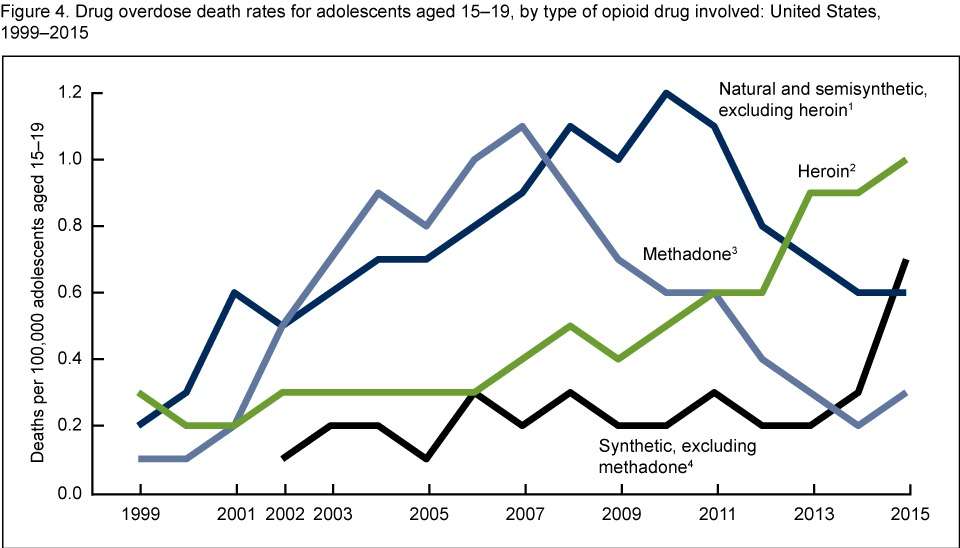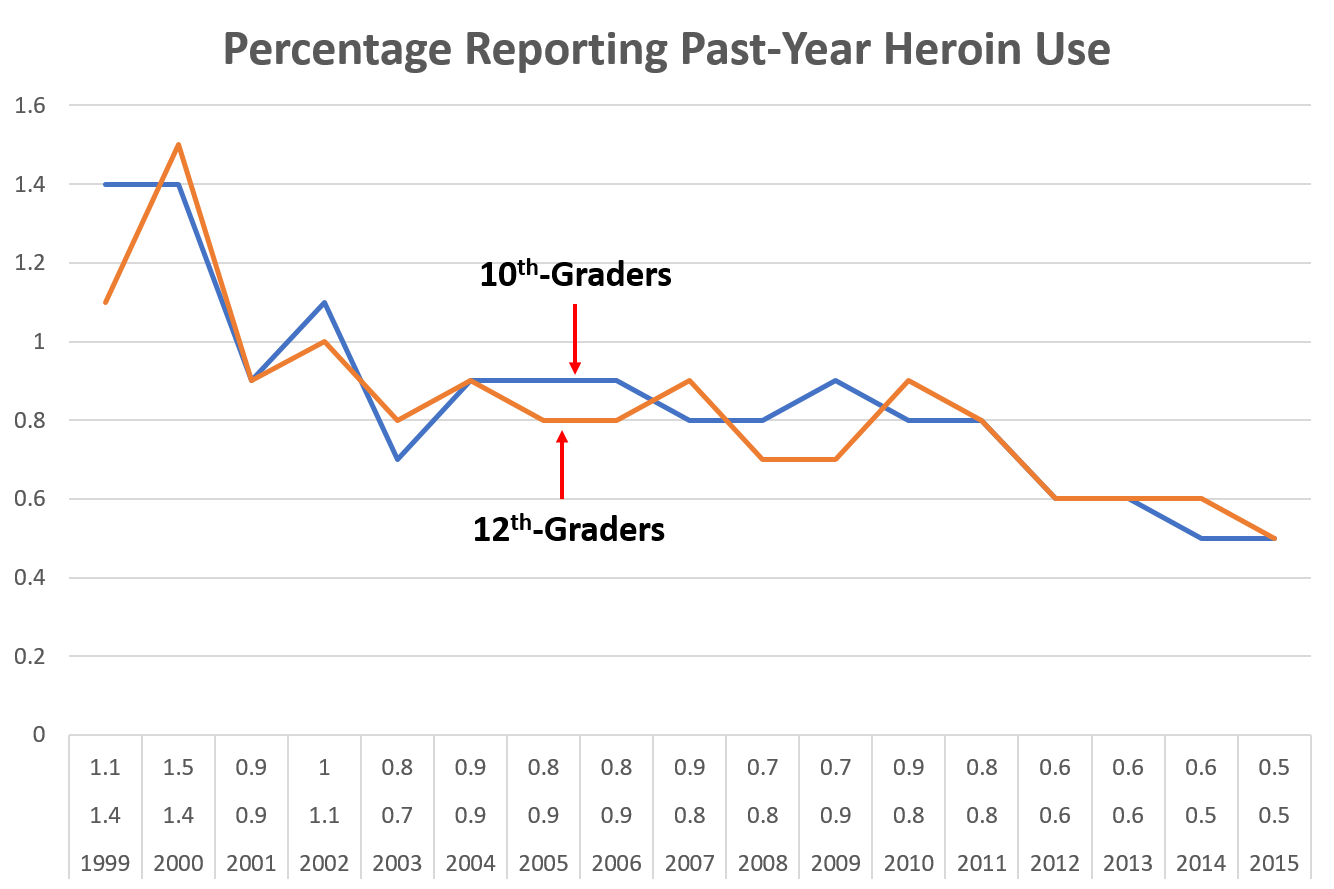Heroin Death Rate Among Teenagers Rises As Heroin Use Falls
The CDC supplies more evidence that the war on drugs is making heroin more lethal.


A new CDC analysis of drug overdoses among teenagers reinforces a point I make in my column today: Heroin use is much deadlier than it used to be, largely thanks to the war on drugs.
The CDC reports that the rate of heroin-related deaths among 15-to-19-year-olds tripled between 1999 and 2015, rising from 0.3 to 1 per 100,000. Yet during the same period, according to the Monitoring the Future Study, the incidence of heroin use among 10th- and 12th-graders fell by 64 percent and 55 percent, respectively. By 2015 teenagers were much less likely to use heroin and much more likely to die as a result of using heroin.
Several factors may help explain this dramatic divergence between heroin use and heroin deaths:
Mixing. Most heroin-related fatalities—more than nine out of 10, according to data from New York City—involve drug mixtures. When heroin is combined with other depressants, such as alcohol or benzodiazepines (e.g., Xanax and Valium), the risk of lethal respiratory effects is much greater. It is possible that drug mixing became more common or more reckless between 1999 and 2015.
Switching. The increase in nonmedical use of prescription painkillers during the first decade of this century prompted a government crackdown that made those pills more expensive and harder to obtain. Prescriptions for narcotic painkillers peaked in 2010, and by 2014 nonmedical use, as measured by the National Survey on Drug Use and Health, was less common than it had been in 2002. But some of those prescription opioid users switched to heroin, which was cheaper but more dangerous because of its unpredictable potency. The switchers, accustomed to the reliable doses of legally manufactured narcotics, may have been especially vulnerable to that risk.
Adulteration. In recent years adulteration (or replacement) of heroin with much stronger synthetic narcotics, fentanyl and its analogues, has become more common, magnifying the danger posed by inconsistent potency.
All three of these hazards are created or exacerbated by the war on drugs. Prohibition discourages an honest discussion of ways to reduce the harms associated with drug use, such as avoiding mixtures of depressants. The government's efforts to stop nonmedical use of painkillers drove opioid users to an alternative that is more dangerous precisely because it is illegal. Drug interdiction encourages traffickers to move toward more compact, more potent, and more hazardous products. Any effort to address the "opioid crisis" that does not take into account the harm caused by the war on drugs is apt not only to fail but to backfire.
